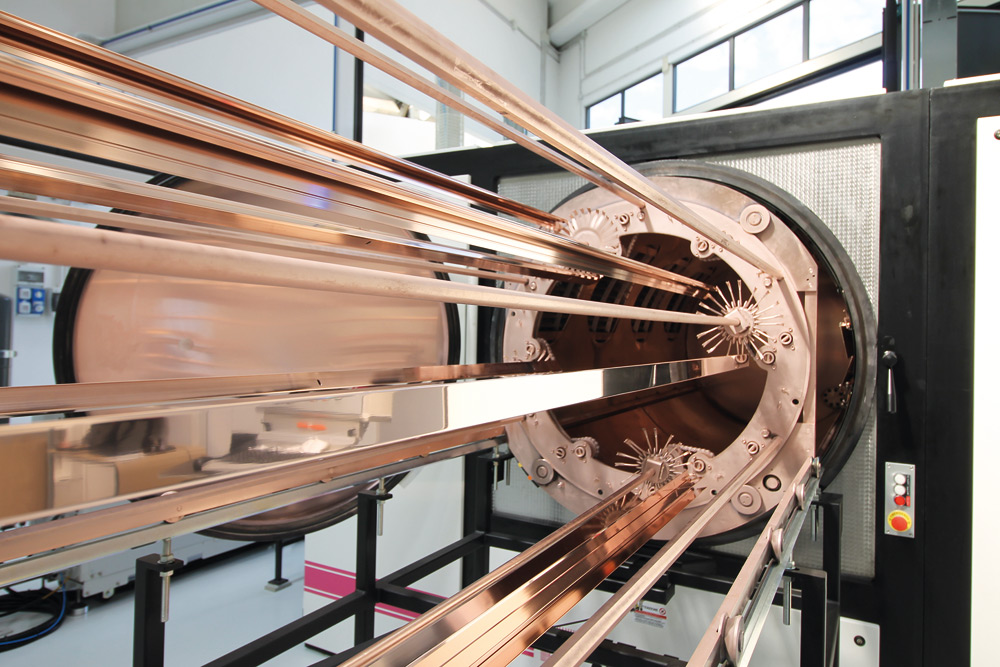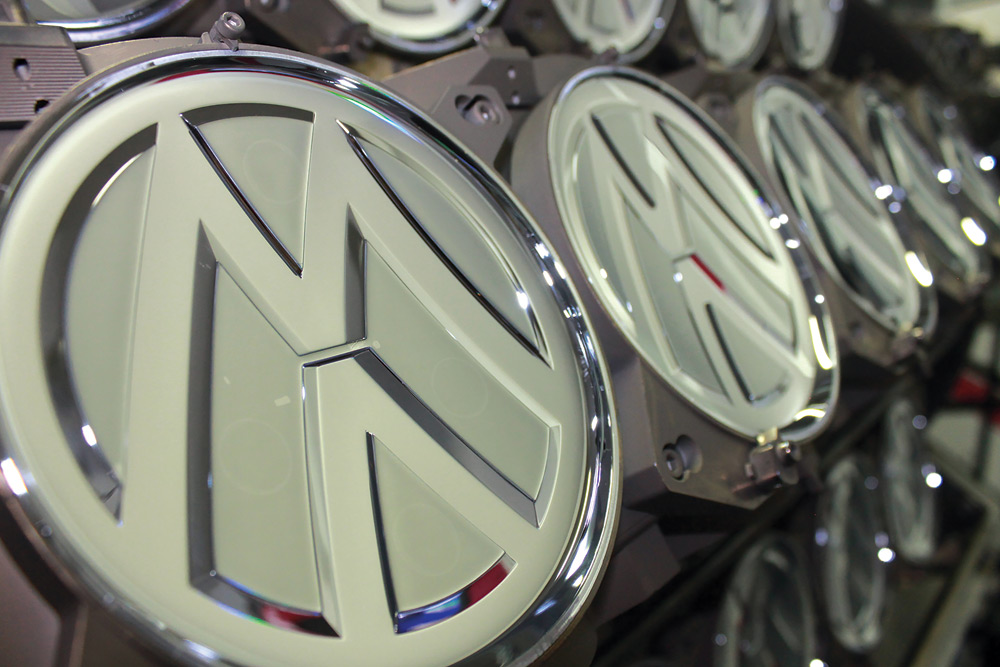In the constantly evolving market of surface treatments, now looking for more and more environmentally sustainable solutions, PVD processes are increasingly playing a leading role. In this article, we explain in detail what PVD is, its most common industrial uses, its application technologies, and its advantages in terms of production and sustainability.
In the surface treatment industry, functionality and aesthetics play a major role in many sectors, such as that of packaging for cosmetics, where part of a product’s value precisely lies in its package.
Functionality and aesthetics depend not only on design choices but also on the materials and processes used, now more and more often environmentally sustainable.
For example, the use of chromium trioxide in functional chrome plating with decorative purposes has been recently banned. This measure is part of a broader regulatory framework, called REACH, which is introducing increasingly stringent rules at the European level on the use of chemicals considered environmentally unfriendly and unsafe.
A more sustainable alternative technology to chrome plating is PVD, which is already widely used in various sectors including cosmetic and food packaging, beverage, design and ornamental components, and funerary art, but also aluminium profiles for furniture, 3D printed components, fashion accessories, and car parts – all needing to achieve different shades and effects with a wide range of colours.
In addition, any subsequent application of a high-strength organic topcoat guarantees the high durability of the PVD coating when subjected to atmospheric ageing and external mechanical stresses.
Let us now take a step back: what is PVD?
What is Physical Vapour Deposition (PVD)
PVD stands for Physical Vapour Deposition. It is a process that deposits a thin metallic film, about a few microns thick, to give the substrate protection against corrosion, scratches, and abrasion and resistance to UV rays and solvents. In addition to these protective and functional properties, it is also used to deposit decorative films of precious materials such as gold and silver.
In general, PVD is an atomic deposition
technology, which creates the film atom by atom. During this process, the material is evaporated from a solid or liquid source and transported in vapour form through a vacuum
or plasma environment to the substrate, where it condenses
and adheres. The substrate may be metal, alloy, plastic, or wood.
There are different methods of depositing the metal film. Let us look at the main ones applied in the industry.
PVD processes in the industry
Thermal evaporation
Although less common in the industry nowadays, thermal evaporation deserves special mention as one of the oldest thin film deposition techniques.
In this process, the material (solid or liquid) sublimates or evaporates in the presence of a current of considerable intensity, thus condensing on the substrate, on which the film is created.
Sputtering
Sputtering, also known as cathodic vaporisation, is one of the most popular application methods in the industry. During this low-temperature operation, the ions of the process gas introduced into the vacuum chamber (usually argon) bombard the cathode (the material to be deposited), thus causing the ejection of atoms and molecular fragments.
This causes the particles ejected from the cathode to vaporise and settle on the substrate (anode), condensing and forming the coating film.
Sputtering involves no melting of material
and it is therefore one of the cleanest application methods available. Any type of material, including heat-sensitive materials, can be coated thanks to the low process temperatures. In addition, it is possible to produce multi-layer systems by inserting several cathodes made in different materials into a vacuum coating system.
 A PVD sputtering machine.
A PVD sputtering machine.Cathode arc evaporation
During the arc evaporation process, evaporation is produced by an electrical discharge directed at the material to be deposited under low-voltage, high-current conditions, which causes the emission of highly ionised particles that adhere to the substrate.
The temperature of the arc is very high, thus enabling any material to be vaporised at an equally high speed. However, the high current intensity can make this technique difficult to manage
and cause droplets, which in turn create defects in the coating.
Electronic cannon
In the electron cannon deposition process, a hot filament generates a high electronic current that hits the material to be evaporated. This material is contained in a crucible, usually made of graphite, which in turn is contained in a copper heat sink. The electron beam thus dissipates its kinetic energy into the material, causing it to heat up and then evaporate.
Pulsed laser deposition
Pulsed laser deposition (PLD) involves the use of a laser beam that hits the material with high energy, causing it to evaporate and then adhere to the substrate. When the laser pulse is absorbed by the target, the energy is first converted into electronic excitation and then into thermal, chemical, and mechanical energy resulting in evaporation, ablation, plasma formation, and exfoliation.
PVD application technologies
The development of PVD coatings has not only affected application processes, but also their related technologies, which currently include machines capable of integrating different types of operations, from sputtering to cathodic arc, in one solution.
PVD machines generally guarantee high processing speeds, even for high production volumes, and a high level of process customisation. They can be installed off-line or in-line, thus constituting an actual plant.
Some of these plants also integrate processes that are usually performed downstream, aimed at product customisation. This also ensures greater control over the technology and the ability to manufacture individual products – a feature that is increasingly in demand – while eliminating any outsourcing costs.
Summing up
As is often the case in the world of surface treatments, the automotive industry is pioneering the use of this technology, perhaps still considered a niche technique, on a more widespread basis. This is happening thanks to the use of PVD to coat not only valuable parts for car interiors (a practice already well established), but also exterior components, such as alloy wheels, where physical vapour deposition replaces the application of a coloured base coat.
Moreover, the versatility of PVD coatings also provides responses to two mega trends in the automotive sector: lightweight construction, which involves lightening all car components, and electric mobility, which requires a range of colours recalling electric power (greens and blues). As a thin film available in a broad selection of tints, PVD contributes to the lightness of cars, while meeting the growing demand of the industry for a wide range of finishes.
 Some radomes treated with PVD sputtering.
Some radomes treated with PVD sputtering.Therefore, whereas until recently the long process times, as well as the high quality requirements of some sectors such as the automotive industry, did not justify this investment, now the technological advancement of machines – which guarantee shorter cycle times, larger production volumes, and more competitive production costs – combined with the advantages guaranteed in terms of repeatable quality results and a more sustainable environmental footprint, is leading the industry to use PVD treatments more and more.